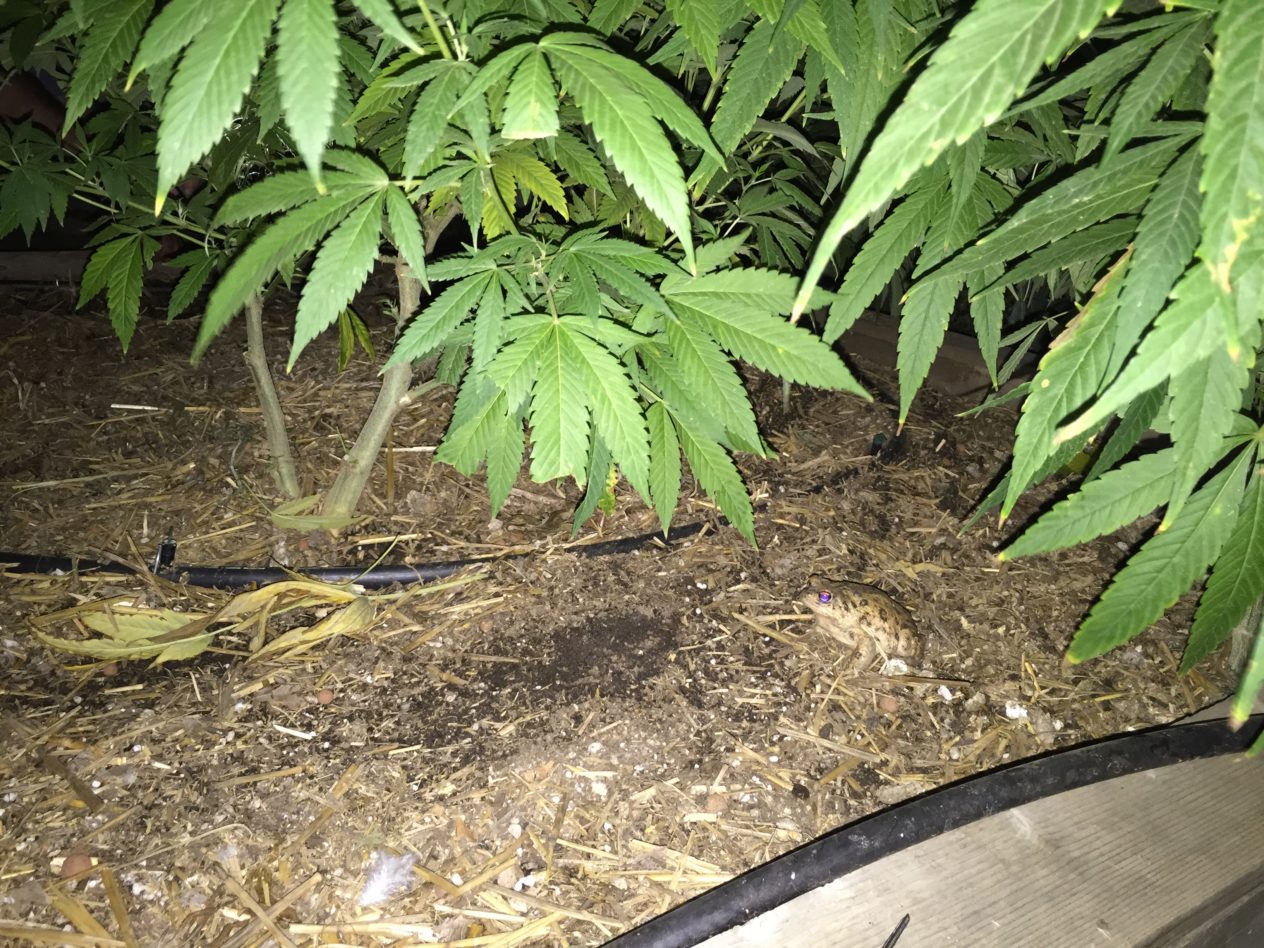I recently saw a California toad in our cannabis garden. It is a pretty cool sight and I enjoy the visit from our local amphibian friend. We see toads a lot. It is definitely a sign that the biology and food web in our garden is strong.
California Toad
The California toad is most active from January to October. Toads are often found around small ponds or anywhere close to water. Toads usually hibernate during the winter months. During the warmer summer months, most California toads are nocturnal. Toads are known to live up to 16 years, but most adults live 8 to 12 years in the wild. They eat pretty much any bug they come across. For cannabis growers, they are great at controlling mosquitoes, moths, beetles, cockroaches, snails, slugs, and flies in your garden. The toad uses its excellent vision and long sticky tongue to catch its prey.
Unlike frogs, toads generally walk instead of hopping. Toads are slow moving and are vulnerable to prey. Toads are easy to identify when compared to frogs because their bodies are much bigger. They also have more bumps than frogs. Toads are extremely sensitive to chemicals and pesticides. It is very important to avoid using pesticides if toads are present.
Be careful when handling Toads
Toads have enlarged glands behind each eye. These glands contain a white poison that deter predators from engaging. If ingested, the poison can cause an irregular heart beat and nausea. If you come in contact with a California Toad, wash your hands as soon as possible. Please remember to keep your pets away from them as well.
Welcomed in any organic garden, adults will stay in the same area if food is abundant and they can eat over 10,000 bugs in a few months. Some toads will eat over a thousand bugs in one day. Therefore, you should imagine them as your own personal bug security guard! If you want to learn more, look here.
